Fractal Design Aspect 14 RGB PWM in detail
Starting with the Fractal Design Aspect 14 RGB PWM test, we are starting to build a database of 140mm fan results. These may have a smaller market presence due to poorer compatibility, but compared to the 120mm models they have the makings of higher efficiency, which is why they are more popular among many users. The Aspect 14 RGB PWM fan, in addition to its aerodynamic qualities, also fights for customer favour with its lighting.
Before we get into analyzing the sub-details, it’s worth noting that the Fractal Design Aspect 14 with ARGB LED fan is available in up to four variants, which differ in power supply control method and color design. Variants without “PWM” in the name have linear control (and are significantly slower with 1000rpm), and regardless of whether it’s a DC or PWM fan, there are two colour variants of each – black and white and all-white.
You’ll recall that we’ve emphasized many times that different color designs, with different chemical compositions, shape the characteristics of a fan to some extent (a comparison of a black Corsair AF120 fan with a white one shows this well), but that’s not the case here. The Aspect 14 RGB (PWM) always has the same white rotor and only the colour of the frame changes, i.e. the static element whose material does not affect the mechanical properties. The same rotor is also on the non-lighted variant (Aspect 14 “White”). Fractal Design didn’t reach for transparent material, which is fine, the “white PBT” is very light-conductive.
The rotor is relatively simple, with broad blades with a relatively small radius of the leading edges. Blades designed in this way fit well into the concept of larger fans, undulation at the tips will not be as intense, which means lower vibration is expected, and the resonant frequencies caused by torque ripple should not be excessive either. But even so, it should be noted that the blades are quite flexible, being relatively thin at 1.6 mm at the thickest points (at the tips). This is also why the overall weight (160 g) of the Aspect 14 is relatively low for a 140 mm fan.
The blades are characterized by a small step behind the leading edges. This is designed to suppress intake microturbulence in order to achieve higher airflow at lower noise levels. This is not the only thing the 140 mm Aspects have in common with the smaller, 120mm one (Aspect 12) – the geometry of the outer cross-section (of blades) is the same, only on the one number larger fan (Aspect 14) it is proportionally “stretched”. That’s why we took this model for our first 140mm fan test, so you can see how the larger cross-section affects the airflow on the most similar fan possible. The geometry and material used are the same across the fans, although the Aspect 14 blades are more flexible due to their greater length. It’s a bit of a shame that the engineers didn’t choose a greater thickness of material to manufacture them.
Even the internal cross-section of the rotor, or its core/motor housing, is the same as on the Aspect 12. However, we are not as interested in this as we are in the increase in the “active” area of the Aspect 14 blades – about 46%. Approximately this high could also be the increase in airflow at the same speed, but the difference is significantly less when aligned to equal noise level.
The execution of cables is commendable. They are both long, half a meter, and the branch to power both the motor and the ARGB lighting has two connectors at the end for more convenient connection of another fan in series.
| Brand and model of fan | Paper specicifations * | Price [EUR] | ||||||||
| Format (and thickness) in mm | Connecting | Speed [rpm] | Airflow [m3/h] | Static pressure [mm H2O] | Noise level [dBA] | Bearings | MTBF [h] | |||
| Motor | RGB LED | |||||||||
| Fractal Design Aspect 14 RGB PWM | 140 (25) | 4-pin (PWM) | 3-pin (5 V) | 500–1700 | 33.98–132.52 | 0.09–1.93 | 10.0–35.5 | rifle | 90 000 | 18 |
| DeepCool FK120 | 120 (25) | 4-pin (PWM) | N/A | 500–1850 | 117.21 | 2.19 | 28.0 | fluid | N/A | 11 |
| Asus TUF Gaming TF120 | 120 (25) | 4-pin (PWM) | 3-pin (5 V) | 1900 | 129.12 | 2.50 | 29.0 | fluid | 250 000 | 14 |
| BeQuiet! Light Wings (BL072) | 120 (25) | 4-pin (PWM) | 3-pin (5 V) | 1700 | 70.53 | 1.66 | 20.6 | rifle | 60 000 | 26 |
| DeepCool FC120 | 120 (25) | 6-pin (PWM) | 6-pin (5 V) | 500–1800 | 105.19 | 1.83 | 28.0 | hydrodynamic | N/A | 20 |
| Nidec Servo Gentle Typhoon D1225C (2150/12) | 120 (25) | 4-pin (PWM) | N/A | 2150 | 117.23 | 2.87 | 30.0 | ball | 100 000 | 20 |
| BeQuiet! Shadow Wings 2 (BL085) | 120 (25) | 4-pin (PWM) | N/A | 1100 | 65.41 | 0.82 | 15.9 | rifle | 80 000 | 15 |
| Noctua NF-A12x25 PWM | 120 (25) | 4-pin (PWM) | N/A | 450–2000 | 102.10 | 2.34 | 22.6 | SSO2 | 150 000 | 28 |
| Corsair AF120 Elite (black) | 120 (25) | 4-pin (PWM) | N/A | 400–1850 | 18.52–100.41 | 0.09–1.93 | 31.5 | fluid | N/A | 24 |
| Cooler Master MasterFan SF120M | 120 (25) | 4-pin (PWM) | N/A | 650–2000 | 105.33 | 2.40 | 5.5–22.0 | ball | 280 000 | 33 |
| Akasa Alucia SC12 | 120 (25) | 4-pin (PWM) | N/A | 500–2000 | 95.65 | 1.94 | 33.1 | hydrodynamic | N/A | 12 |
| BeQuiet! Silent Wings Pro 4 (BL098) | 120 (25) | 4-pin (PWM) | N/A | 3000 | 142.50 | 5.31 | 36.9 | fluid | 300 000 | 32 |
| Thermalright X-Silent 120 | 120 (25) | 3-pin (DC) | N/A | 1000 | 61.31 | N/A | 19.6 | fluid | 50 000 | 5 |
| Fractal Design Aspect 12 RGB PWM | 120 (25) | 4-pin (PWM) | 3-pin (5 V) | 500–2000 | 22.09–95.14 | 0.23–2.34 | 10.0–33.2 | rifle | 90 000 | 16 |
| BeQuiet! Silent Wings 3 (BL066) | 120 (25) | 4-pin (PWM) | N/A | 1450 | 85.80 | 1.79 | 16.4 | fluid | 300 000 | 21 |
| Gelid Zodiac | 120 (25) | 4-pin (PWM) | 3-pin (5 V) | 700–1600 | 111.29 | 1.47 | 35.0 | hydrodynamic | N/A | 10 |
| Fractal Design Dynamic X2 GP-12 PWM | 120 (25) | 4-pin (PWM) | N/A | 500–2000 | 148.83 | 0.51–2.30 | 10.0–32.2 | rifle | 100 000 | 12 |
| BeQuiet! Pure Wings 2 (BL039) | 120 (25) | 4-pin (PWM) | N/A | 1500 | 87.00 | 1.25 | 19.2 | rifle | 80 000 | 11 |
| Gigabyte Aorus 120 ARGB | 120 (25) | 4-pin (PWM) | 3-pin (5 V) | 800–1700 | 31.47–69.40 | 0.37–1.48 | 7.3–28.6 | sleeve | 73 500 | 25 |
| Arctic BioniX P120 A-RGB | 120 (30) | 4-pin (PWM) | 3-pin (5 V) | 400–2300 | 81.55 | 2.10 | 33.4 | fluid | N/A | 21 |
| Akasa OTTO SF12 | 120 (25) | 4-pin (PWM) | N/A | 0–2000 | 164.84 | 3.59 | 7.1–31.7 | ball | 80 000 | 22 |
| Cooler Master SickleFlow 120 ARGB | 120 (25) | 4-pin (PWM) | 3-pin (5 V) | 680–1800 | 105.34 | 2.50 | 8.0–27.0 | rifle | 160 000 | 15 |
| Alphacool SL-15 PWM | 120 (15) | 4-pin (PWM) | N/A | 600–1800 | 71.40 | 1.20 | 32.0 | ball | 50 000 | 11 |
| Arctic BioniX F120 | 120 (25) | 4-pin (PWM) | N/A | 200–1800 | 117.00 | 2.10 | 20.0 | fluid | N/A | 10 |
| SilverStone SST-AP123 | 120 (25) | 3-pin (DC) | N/A | 1500 | 96.84 | 1.46 | 23.8 | fluid | 50 000 | 25 |
| Noctua NF-P12 redux-1700 PWM | 120 (25) | 4-pin (PWM) | N/A | 400–1700 | 120.20 | 2.83 | 25.1 | SSO | 150 000 | 13 |
| SilentiumPC Fluctus 120 PWM | 120 (25) | 4-pin (PWM) | N/A | 300–1800 | N/A | N/A | N/A | fluid | 100 000 | 12 |
| MSI MEG Silent Gale P12 | 120 (25) | 4-pin (PWM) | N/A | 0–2000 | 95.48 | 2.21 | 22.7 | hydrodynamic | 50 000 | 31 |
| Asus ROG Strix XF120 | 120 (25) | 4-pin (PWM) | N/A | 1800 | 106.19 | 3.07 | 22.5 | „MagLev“ | 400 000 | 23 |
| Akasa Vegas X7 | 120 (25) | 4-pin (PWM) | 4-pin (12 V) | 1200 | 71.19 | N/A | 23.2 | fluid | 40 000 | 11 |
| Reeven Coldwing 12 | 120 (25) | 4-pin (PWM) | N/A | 300–1500 | 37.54–112.64 | 0.17–1.65 | 6.5–30.4 | sleeve | 30 000 | 12 |
| Reeven Kiran | 120 (25) | 4-pin (PWM) | shared | 400–1500 | 110.10 | 2.95 | 33.6 | fluid | 120 000 | 17 |
| SilentiumPC Sigma Pro 120 PWM | 120 (25) | 4-pin (PWM) | N/A | 500–1600 | 79.00 | N/A | 15.0 | hydraulic | 50 000 | 7 |
| SilentiumPC Sigma Pro Corona RGB 120 | 120 (25) | 4-pin (PWM) | 4-pin (12 V) | 1500 | 56.58 | N/A | N/A | hydraulic | 50 000 | 12 |
| SilverStone SST-AP121 | 120 (25) | 3-pin (DC) | N/A | 1500 | 60.08 | 1.71 | 22.4 | fluid | 50 000 | 18 |
| SilverStone SST-FQ121 | 120 (25) | 7-pin (PWM) | N/A | 1000–1800 | 114.68 | 0.54–1.82 | 16.4–24.0 | fluid | 150 000 | 20 |
| Xigmatek XLF-F1256 | 120 (25) | 3-pin (DC) | N/A | 1500 | 103.64 | N/A | 20.0 | rifle | 50 000 | 16 |
* When reading performance values, a certain amount of tolerance must always be taken into account. For maximum speeds, ±10 % is usually quoted, minimum speeds can vary considerably more from piece to piece, sometimes manufacturers will overlap by as much as ±50 %. This must then also be adequately taken into account for air flow, static pressure and noise levels. If only one value is given in a table entry, this means that it always refers to the situation at maximum speed, which is achieved at 12 V or 100 % PWM intensity. The manufacturer does not disclose the lower limit of the performance specifications in its materials in that case. The price in the last column is always approximate.
- Contents
- Fractal Design Aspect 14 RGB PWM in detail
- Basis of the methodology, the wind tunnel
- Mounting and vibration measurement
- Initial warm-up and speed recording
- Base 6 equal noise levels…
- ... and sound color (frequency characteristic)
- Static pressure measurement…
- … and airflow
- Everything changes with obstacles
- How we measure power draw and motor power
- Measuring the intensity (and power draw) of lighting
- Results: Speed
- Results: Airlow w/o obstacles
- Results: Airflow through a nylon filter
- Results: Airflow through a plastic filter
- Results: Airflow through a hexagonal grille
- Results: Airflow through a thinner radiator
- Results: Airflow through a thicker radiator
- Results: Static pressure w/o obstacles
- Results: Static pressure through a nylon filter
- Results: Static pressure through a plastic filter
- Results: Static pressure through a hexagonal grille
- Results: Static pressure through a thinner radiator
- Results: Static pressure through a thicker radiator
- Results: Static pressure, efficiency by orientation
- Reality vs. specifications
- Results: Frequency response of sound w/o obstacles
- Results: Frequency response of sound with a dust filter
- Results: Frequency response of sound with a hexagonal grille
- Results: Frequency response of sound with a radiator
- Results: Vibration, in total (3D vector length)
- Results: Vibration, X-axis
- Results: Vibration, Y-axis
- Results: Vibration, Z-axis
- Results: Power draw (and motor power)
- Results: Cooling performance per watt, airflow
- Results: Cooling performance per watt, static pressure
- Airflow per euro
- Static pressure per euro
- Results: Lighting – LED luminance and power draw
- Results: LED to motor power draw ratio
- Evaluation





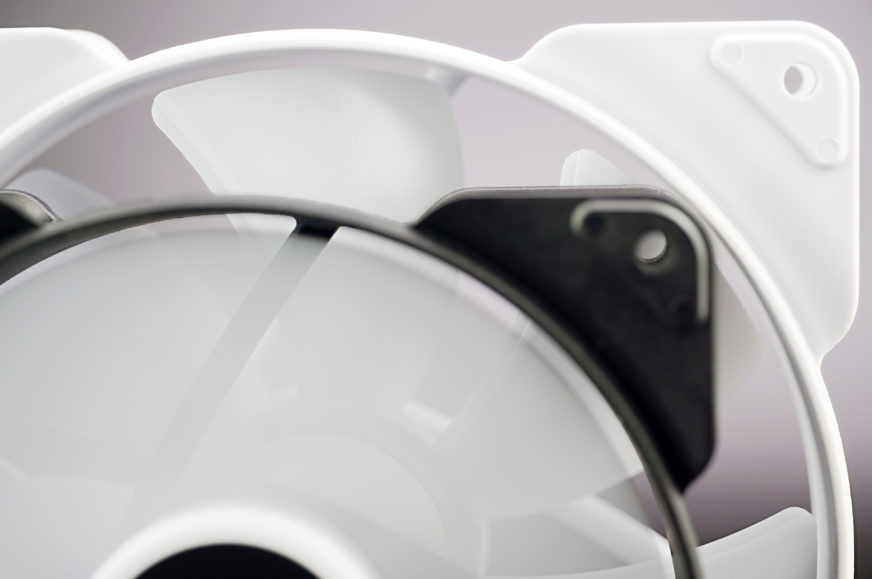
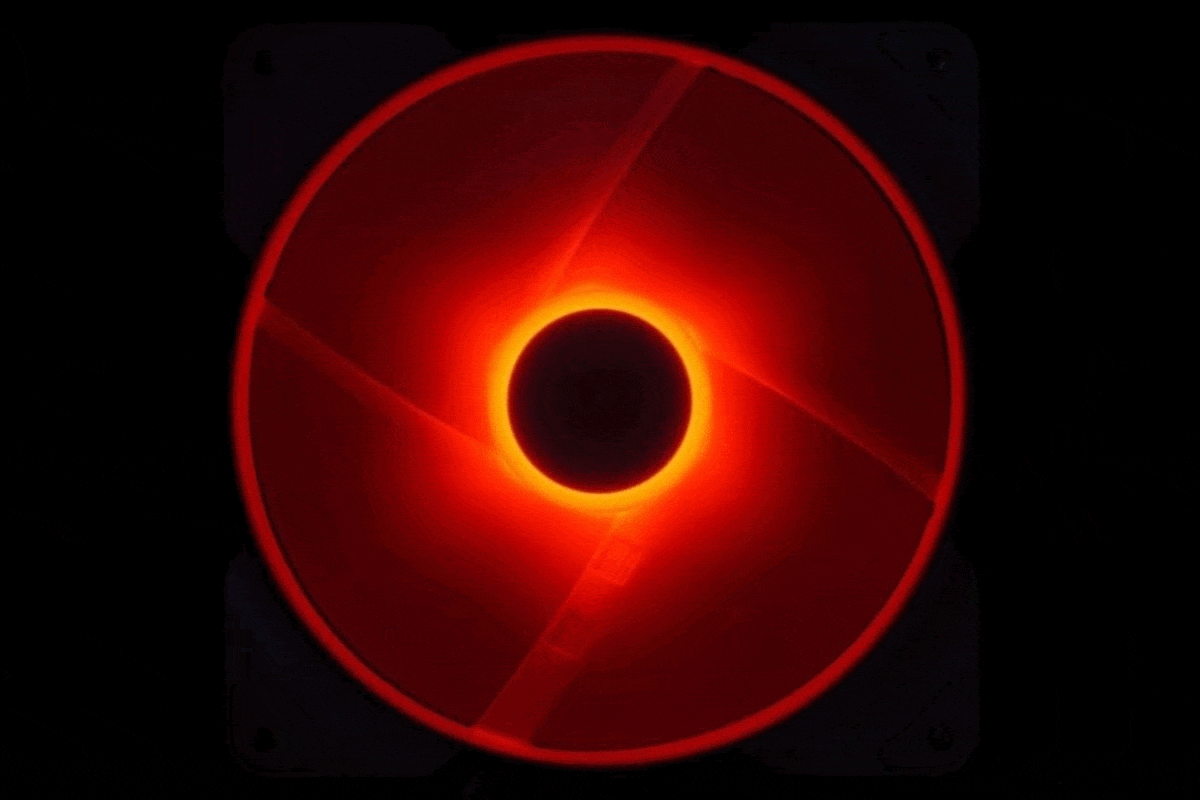
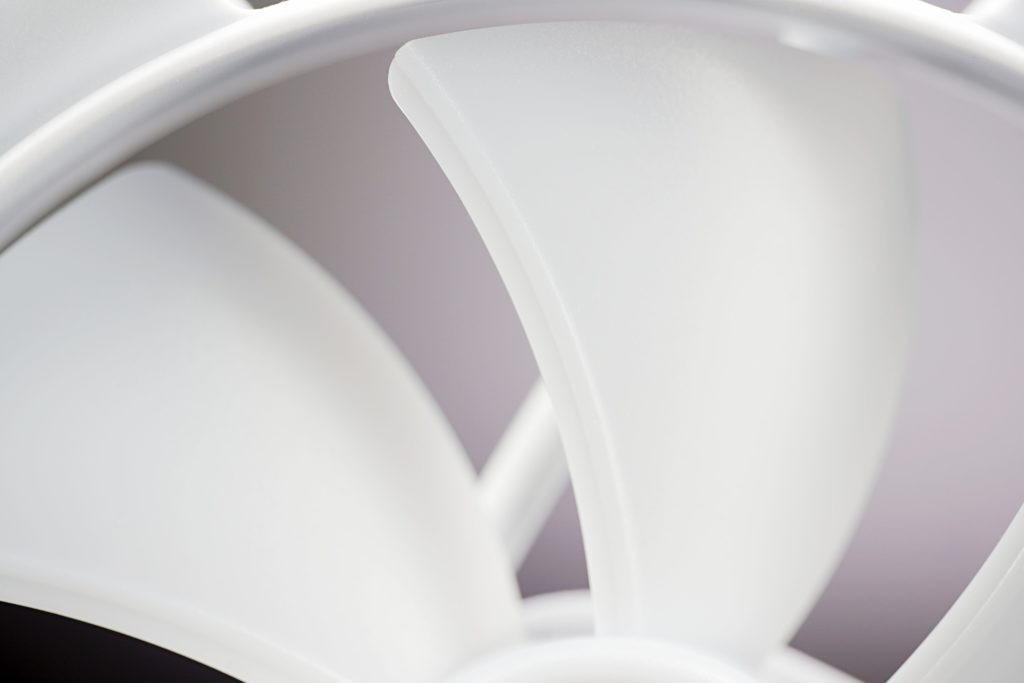
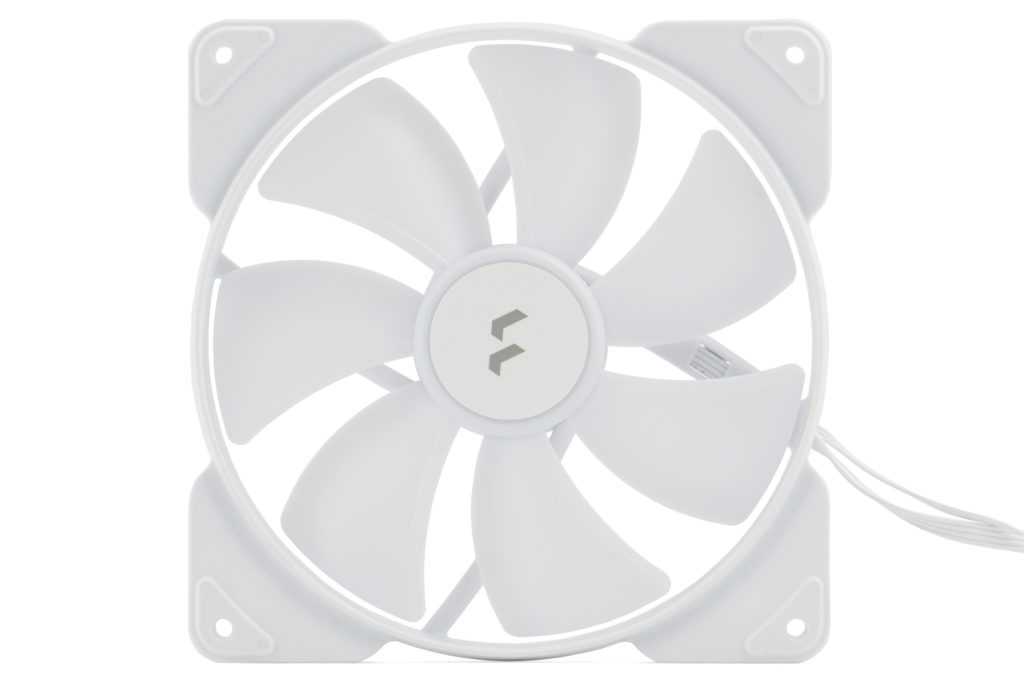




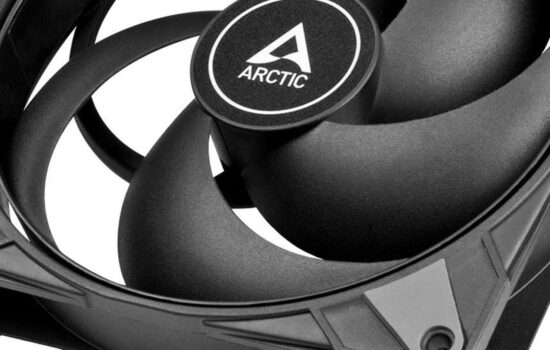



Brilliant review. I’m speechless. You guys take cooling seriously